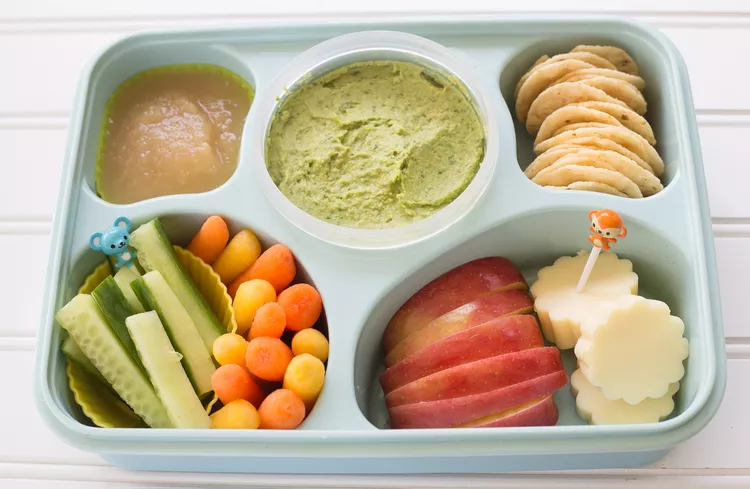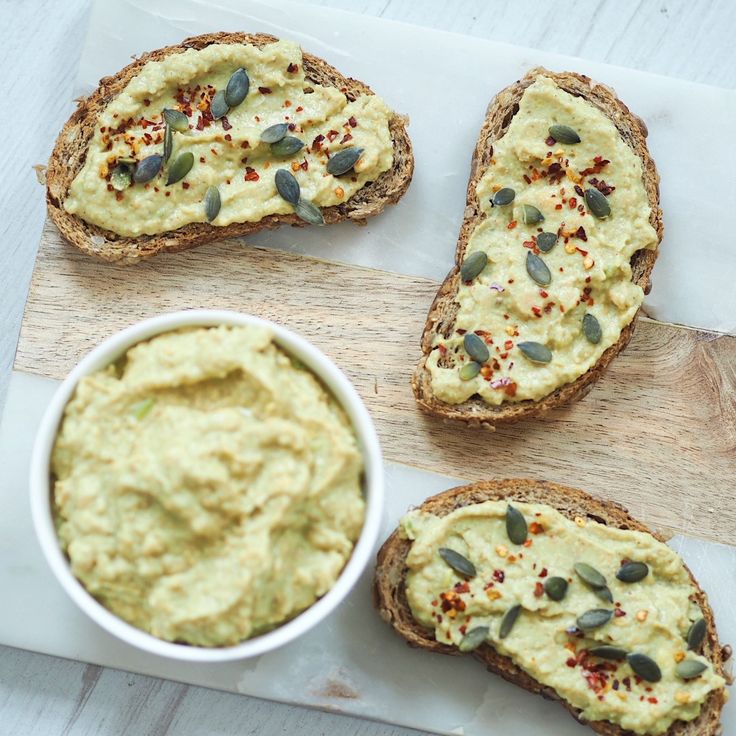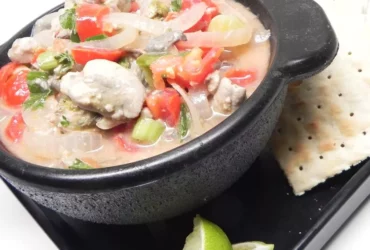Ingredients
Basic Ingredients
Ingredients are the fundamental components that make up a dish or a recipe. They are the raw materials that come together to create a harmonious balance of flavors, textures, and aromas. In the context of the Easy Avocado Hummus Recipe, ingredients play a crucial role in bringing out the unique characteristics of this creamy and nutritious dip.
For any recipe, it’s essential to understand what constitutes basic ingredients. Basic ingredients are the fundamental components that are used repeatedly across various recipes. They form the foundation upon which more complex flavors and textures are built. In the case of hummus, some common basic ingredients include chickpeas, tahini, garlic, lemon juice, olive oil, salt, and spices.
Chickpeas are one of the primary components of hummus. They provide a rich source of protein and fiber, making them an excellent addition to a healthy diet. Tahini, on the other hand, is a creamy paste made from ground sesame seeds. It adds depth and nutty flavor to the dish. Garlic, although a basic ingredient, packs a punch when it comes to aroma and taste. Its pungency is perfectly balanced by the acidity of lemon juice.
Lemon juice brings a bright and zesty note to the hummus, while olive oil provides a smooth and velvety texture. Salt enhances the flavors of all the ingredients, bringing them together in perfect harmony. Spices like cumin and paprika can be added to give the dish an extra boost of flavor.
When it comes to making avocado hummus, you’ll need to add some ripe avocados to the mix. Avocado adds a silky smooth texture and a subtle nutty flavor that complements the chickpeas perfectly. The key is to balance the creaminess of the avocado with the tanginess of the lemon juice.
By understanding the basic ingredients that make up this Easy Avocado Hummus Recipe, you’ll be able to experiment with different combinations and create unique flavors that suit your taste preferences. Don’t be afraid to add a dash of cumin or a squeeze of fresh lime juice to give it an extra boost of flavor.
1 ripe avocado
When it comes to making our Easy Avocado Hummus Recipe, having a ripe avocado is crucial for achieving the best flavor and texture.
A ripe avocado is one that is slightly soft to the touch but still firm enough to hold its shape. The skin should be dark green or nearly black in color and may have a few small wrinkles on it, which indicates ripeness.
One way to check if an avocado is ripe is to gently press the skin around the stem end. If the area yields slightly to pressure but still feels slightly springy, then the avocado is likely ready to use.
To speed up the ripening process, you can place the avocado in a paper bag with an apple or banana at room temperature for a few days. The ethylene gas produced by these fruits will help ripen the avocado faster.
However, if you’re planning to make our Easy Avocado Hummus Recipe right away and don’t have time to let the avocado ripen, it’s better to use one that is slightly unripe but has a slight soft spot on the skin. Simply cut around this spot and scoop out the firmer part of the flesh.
For the best results in our Easy Avocado Hummus Recipe, be sure to use a ripe but not overripe avocado. If the avocado is too ripe, it will turn into mush when pureed with the other ingredients.
1 cup cooked chickpeas
The first ingredient needed for this Easy Avocado Hummus Recipe is 1 cup cooked chickpeas.
Canned chickpeas are a convenient alternative to cooking dried chickpeas, but you can also use cooked, frozen or fresh chickpeas if they’re available in your area. You should rinse the chickpeas with water and then soak them for a few hours before boiling or steaming them until they’re tender.
Alternatively, you can use pre-cooked chickpeas that have been seasoned with salt and other spices. These are widely available in most supermarkets and can be used as a convenient substitute in this recipe.
When using cooked chickpeas, drain off any excess liquid to prevent the hummus from becoming too watery or soggy. You may need to rinse them one more time after cooking to remove any excess salt or spices if you’re concerned about flavor profiles.
The exact nutritional value of 1 cup cooked chickpeas will vary depending on their size and whether they’ve been seasoned with any additional ingredients during the cooking process. However, as a general guideline, 1 cup cooked chickpeas can provide approximately 269 calories and 15 grams of protein.
1/4 cup fresh lemon juice
- Lemon juice adds a bright, citrusy flavor to the avocado hummus and helps to balance out the richness of the avocados.
- In this recipe, you’ll need 1/4 cup of fresh lemon juice, which is equivalent to about two to three lemons depending on their size and juiciness.
- It’s essential to use fresh lemon juice for this recipe, as it will give the best flavor and texture to the hummus.
- You can extract the lemon juice by cutting the lemons in half and squeezing them using a manual or electric juicer, or simply by squeezing them with your hands over a fine-mesh strainer into a bowl or cup.
- Make sure to catch any seeds or pulp that come out during the squeezing process and discard them before adding the lemon juice to the recipe.
- The acidity in the lemon juice will also help to break down the starches in the chickpeas, making the hummus smooth and creamy.
- Keep in mind that if you’re using a particularly sour or bitter lemon variety, you may want to reduce the amount of lemon juice used in the recipe to avoid overpowering the other flavors.
1/4 cup olive oil
Olive oil is a crucial ingredient in the Easy Avocado Hummus Recipe, and it plays a vital role in bringing out the flavors of the other ingredients. To measure out 1/4 cup of olive oil, you can use a liquid measuring cup or a dry measuring cup with a pouring spout.
When selecting an olive oil for this recipe, choose one that is high-quality and has a mild flavor. You want to avoid using a robust or extra-virgin olive oil, as they may overpower the other flavors in the hummus. A neutral-tasting olive oil will allow the natural taste of the avocado and chickpeas to shine through.
Olive oil is added to the recipe at two different stages: when roasting the garlic and when mixing the hummus together with the remaining ingredients. The initial amount of 1/4 cup is used to sauté the garlic until it’s soft and fragrant, which helps to mellow out its flavor and makes it blend seamlessly into the hummus.
Later on in the recipe, another 2 tablespoons (approximately half of the initial 1/4 cup) are added to the blender with the remaining ingredients. This additional amount of olive oil helps to thin out the hummus slightly and creates a smooth, creamy consistency that’s perfect for dipping pita chips or veggies.
Some key characteristics of high-quality olive oil include:
- A rich, golden color
- A delicate aroma that is slightly fruity but not overpowering
- A smooth texture that doesn’t have a greasy or sticky feel
- A neutral flavor that won’t alter the taste of the other ingredients
By incorporating olive oil into your Easy Avocado Hummus Recipe, you’ll be able to create a delicious and healthy dip that’s full of creamy texture and rich flavor. So don’t skip this crucial ingredient – use 1/4 cup of high-quality olive oil to bring out the best in your hummus!
Salt and pepper to taste
The ingredients for a delicious and healthy Easy Avocado Hummus Recipe include:
- 1 ripe avocado
- 1 can (15 ounces) chickpeas, drained and rinsed
- 1/4 cup freshly squeezed lemon juice
- 1/4 cup olive oil
- 2 cloves garlic, minced
- 1 teaspoon salt (use kosher or sea salt for a more complex flavor)
- Black pepper to taste
Note: When using black pepper to taste, start with a small amount and adjust as needed, as the flavor can quickly become overpowering.
A high-quality salt is essential in bringing out the flavors of the other ingredients.
2 cloves garlic, minced
The ingredient list for our easy avocado hummus recipe includes a variety of components that work together to create a delicious and healthy dip. Here are some key ingredients:
- 1 ripe avocado, diced
- 2 cloves garlic, minced (as discussed below)
- 1/4 cup freshly squeezed lemon juice
- 1/4 cup tahini
- 2 tablespoons olive oil
- 1/2 teaspoon salt
- 3 cloves of fresh parsley, chopped (optional)
The garlic in this recipe is used to add a depth of flavor and aroma to the hummus. It’s often considered an essential ingredient in Middle Eastern cuisine, where it’s commonly paired with lemon juice and olive oil to create a rich and savory taste.
To properly mince 2 cloves of garlic, first peel the individual cloves using your fingers or a vegetable peeler. Then, place the peeled cloves on a flat surface and use a sharp knife to finely chop them into small pieces. Be careful not to crush the garlic, as this can cause it to release its enzymes and become bitter.
When measuring out 2 cloves of minced garlic for our avocado hummus recipe, you’re looking for approximately 1 tablespoon of minced garlic. This will provide a subtle yet noticeable flavor enhancement to the dip without overpowering the other ingredients.
Instructions
Making the Hummus Base
To create the hummus base for our easy avocado hummus recipe, you will first need to gather all the necessary ingredients and equipment.
The primary ingredients required for the hummus base are 1 cup of dried chickpeas (also known as garbanzo beans), 2 cloves of garlic, 1/4 cup of freshly squeezed lemon juice, 1/4 cup of tahini paste, 2 tablespoons of olive oil, and salt to taste.
- Additionally, you will need a blender or food processor capable of handling solid ingredients with ease.
- A high-speed blender such as a Vitamix or Blendtec is recommended for optimal results.
- Now that we have all the necessary ingredients and equipment in place, let’s move on to the process of making the hummus base.
- To begin, rinse the dried chickpeas under cold running water and drain them thoroughly.
- Remove any debris or impurities from the chickpeas, then transfer them to a blender or food processor along with the garlic cloves.
- Add in the lemon juice, tahini paste, olive oil, and salt. You can adjust the amount of lemon juice to your desired level of acidity and flavor.
- With all the ingredients combined, it’s time to blend until smooth and creamy.
- The exact blending time will vary depending on your equipment’s power and the consistency you’re aiming for, but in general, a total blending time of 1-2 minutes is sufficient.
- During this process, you can pause the blender periodically to scrape down the sides with a spatula to ensure even mixing and prevent any lumps from forming.
- Once the hummus base has reached your desired consistency, it’s now ready for use in our easy avocado hummus recipe.
Drain and rinse the chickpeas, then place them in a blender or food processor with the lemon juice, garlic, and a pinch of salt.
When it comes to instructions, clear and concise language is essential for conveying complex tasks in a straightforward manner. In the context of cooking, such as in the Easy Avocado Hummus Recipe, precise instructions can make all the difference between success and disaster.
Take the instruction “Drain and rinse the chickpeas” for example. On its own, this phrase may seem straightforward, but it assumes a certain level of familiarity with food preparation. What if the reader is new to cooking or doesn’t know how to drain a can of chickpeas? A more detailed instruction might read: “Carefully pour the contents of the can into a colander and let the excess liquid drain away. Rinse the chickpeas under cold running water, shaking off any remaining moisture before using.”
This revised instruction not only clarifies the process but also adds visual cues to help the reader understand what they are supposed to do. In contrast, the original phrase is too vague and leaves room for error.
The importance of clear instructions extends beyond cooking. In any situation where a task needs to be performed, instructions should be carefully crafted to ensure that everyone involved understands what is expected of them.
When writing instructions, consider the following tips: use simple language, break down complex tasks into smaller steps, and provide visual cues wherever possible. By following these guidelines, you can create clear and effective instructions that minimize confusion and maximize success.
In the Easy Avocado Hummus Recipe, for instance, the instruction “then place them in a blender or food processor with the lemon juice, garlic, and a pinch of salt” assumes a certain level of familiarity with blending ingredients. A more detailed instruction might read: “Carefully add the drained chickpeas to a blender or food processor fitted with a lid. Add 2 tablespoons of freshly squeezed lemon juice, 1 minced clove of garlic, and a pinch of salt (about 1/4 teaspoon). Blend on high speed for about 30 seconds, stopping occasionally to scrape down the sides of the bowl.”
By providing more detailed instructions, you can help readers understand the nuances of food preparation and reduce the likelihood of mistakes. This is particularly important in cooking where a small error can have significant consequences.
Blend until smooth and creamy, stopping to scrape down the sides as needed.
The process of blending ingredients into a smooth and creamy consistency is an essential step in many recipes, including the Easy Avocado Hummus Recipe. To achieve this, it’s crucial to follow these guidelines carefully.
Firstly, ensure that all the ingredients are at room temperature, as this will make it easier for them to blend together smoothly. Remove any pits or stones from the avocados and add them to the blender, along with the chickpeas, lemon juice, garlic powder, salt, and olive oil.
Next, set the blender to a medium to high speed and start blending the ingredients. You may need to stop the blender occasionally to scrape down the sides of the container with a spatula, especially if you’re using a smaller blender. This will help to ensure that all the ingredients are fully incorporated and that none of them are left stuck to the sides.
As you blend, pay attention to the texture of the mixture. You may need to adjust the speed or stop the blender occasionally to check on the consistency. The goal is to achieve a smooth and creamy texture, similar to traditional hummus.
If you find that the mixture is still too chunky or lumpy after blending, don’t be afraid to add a little more olive oil or lemon juice to help thin it out. Conversely, if it’s too runny, you can always add a bit more chickpeas or avocado to thicken it up.
Once you’ve achieved the desired consistency, give the hummus one final scrape down with your spatula and transfer it to a serving bowl. Garnish with some paprika, parsley, or other herbs if desired, and serve with pita chips, vegetables, or crackers for a delicious and healthy snack.
Add the olive oil and blend until fully incorporated.
Instructions for preparing a delicious and creamy avocado hummus recipe are clear, concise, and easy to follow. The process begins with gathering all the necessary ingredients, which typically include ripe avocados, chickpeas, lemon juice, garlic, salt, and olive oil.
When adding the olive oil, it is essential to blend until fully incorporated. This ensures that the hummus has a smooth and even texture, rather than a separation of ingredients. The blending process also helps to break down the fibers in the avocado, resulting in a creamy and velvety consistency.
The instructions for blending may vary depending on the individual’s personal preference or the specific equipment being used. Some people may prefer to use an immersion blender, while others may opt for a traditional blender or food processor. Regardless of the chosen method, it is crucial to blend the ingredients thoroughly and consistently until they are well combined.
Another important aspect of blending in this recipe is the timing and speed. Over-blending can result in a hummus that becomes too thin and loses its texture, while under-blending may leave behind chunky or separate ingredients. Finding the right balance between these two extremes is crucial for achieving the desired consistency and taste.
Furthermore, adding the olive oil at the correct time is essential to prevent separation and maintain the creaminess of the hummus. The acidity in the lemon juice also plays a role in balancing the flavors and textures of the ingredients, which should be considered when adjusting the proportions or adding other ingredients to the recipe.
Ultimately, following clear instructions for blending and combining the ingredients will result in a delicious and authentic avocado hummus that is perfect for snacking, entertaining, or as a dip for various vegetables and crackers. The simplicity of this recipe belies its rich flavors and textures, making it an excellent choice for anyone looking to try new recipes and experiment with different flavors.
Tips and Variations
Adding Avocado Creaminess
To take your avocado hummus to the next level, consider adding some creaminess with various ingredients and techniques. One way to do this is by incorporating ripe avocados that have been mashed or blended until smooth.
Another option is to add a splash of buttermilk or plain Greek yogurt, which will not only enhance the creamy texture but also provide a tangy flavor contrast. Simply stir in about 1-2 tablespoons of either ingredient and adjust to taste.
For an extra rich and velvety consistency, try adding some soaked cashews or macadamia nuts that have been blended into the hummus mixture. This will not only add creaminess but also a subtle nutty flavor.
Don’t forget to use a high-quality blender or food processor when making your avocado hummus, as this will help to break down the ingredients and create a smooth consistency.
If you prefer a lighter texture, you can also try adding some ice cubes to the mixture and blending until frosty. This is especially helpful if you’re using ripe avocados that are naturally more prone to separating in warm temperatures.
Peel and pit the avocado and add it to the blender with the chickpea mixture.
To take your avocado hummus recipe to the next level, consider the following tips and variations:
- Add a squeeze of fresh lime juice: A squeeze of lime juice can add brightness and balance out the richness of the avocado.
- Use different types of avocados: While Hass avocados are traditional for hummus, other varieties like Fuerte or Bacon avocados may offer unique flavor profiles and textures.
- Add a pinch of cumin: Cumin is a staple spice in Middle Eastern cuisine and pairs well with the earthy flavor of chickpeas. Start with a small amount (about 1/4 teaspoon) to avoid overpowering the other flavors.
- Roast your own garlic: Mince fresh garlic and roast it in the oven until soft and caramelized. This brings out the natural sweetness of garlic and adds depth to your hummus.
- Add some heat with red pepper flakes: For those who like a little spice, add some red pepper flakes to give your hummus a bold kick.
- Make it creamy with Greek yogurt or sour cream: Adding a spoonful of Greek yogurt or sour cream can make the hummus even creamier and more indulgent.
- Use lemon juice instead of lime: If you prefer the taste of lemon, feel free to substitute it in place of lime juice. Keep in mind that lemon will give your hummus a slightly different flavor profile.
- Add some freshness with chopped herbs: Chopped fresh herbs like parsley, cilantro, or dill can add a bright and refreshing twist to your hummus. Simply chop the herbs finely and fold them into the dip just before serving.
Blend until smooth, stopping to scrape down the sides as needed.
When it comes to achieving a creamy and smooth consistency in your homemade avocado hummus, blending is key. To blend until smooth, start by adding all the ingredients to a blender or food processor, including the chickpeas, avocados, lemon juice, garlic, and salt. Make sure to include any accumulated liquid from the drained chickpeas, as it will help to create a creamy texture.
Begin blending on low speed and gradually increase the power as needed. You may need to stop the blender periodically to scrape down the sides with a spatula, ensuring that all ingredients are well incorporated and reaching the blade.
A good rule of thumb is to blend for about 2-3 minutes, or until the mixture has reached your desired consistency. If you prefer a thicker hummus, blend for a shorter amount of time, while longer blending will result in a lighter and more aerated texture.
To add some extra flavor and depth to your avocado hummus, consider trying out different variations:
- Roasted garlic hummus: Add 2-3 cloves of roasted garlic to the blender for an intense and nutty flavor.
- Spicy hummus: Add a pinch of cayenne pepper or red pepper flakes to give your hummus a spicy kick.
- Herby hummus: Blend in some chopped fresh herbs, such as parsley, cilantro, or dill, for added freshness and flavor.
- Smoky hummus: Add 1-2 tablespoons of smoked paprika or liquid smoke for a smoky and savory taste.
- Experiment with different types of beans: Try using cannellini beans, black beans, or kidney beans to create a unique flavor profile.
- Get creative with the garnishes: Top your avocado hummus with sliced vegetables, pickled ginger, or crumbled feta cheese for added texture and visual appeal.
Taste and adjust seasoning as needed.
Taste and adjust seasoning as needed is a crucial step when making the Easy Avocado Hummus Recipe. This step ensures that the hummus has the perfect balance of flavors, with the creamy avocado, rich tahini, and savory chickpeas all harmonizing together in perfect unison.
When tasting your hummus for the first time, pay close attention to the flavor profile as a whole. Take note if it’s too bland or if one particular ingredient is overpowering another. The key here is to strike a balance between the various flavors and textures that make up this delicious dip.
One common issue when making hummus for the first time is overseasoning, especially with salt. This can leave your hummus tasting overly salty and unbalanced. To avoid this, start by adding a small amount of salt and lemon juice to your mixture, then taste as you go until it reaches the desired level of flavor.
An additional tip for achieving the perfect seasoning is to use high-quality ingredients whenever possible. This means using fresh lemons and not bottled lemon juice, along with the best quality tahini and avocado available. The more flavorful these ingredients are, the better your hummus will taste in the end.
Another variation you can try when making this Easy Avocado Hummus Recipe is to add some chopped herbs such as parsley or cilantro. This will give your hummus a fresh, green flavor that’s perfect for springtime or summer gatherings.
You could also consider adding a bit of cumin or smoked paprika for added depth and warmth. These spices will complement the earthy flavor of the chickpeas beautifully, making this a truly delicious dip that everyone will love.
Note: This recipe is inspired by the University of California’s Guide to Avocado Preparation, which recommends using ripe avocados for best flavor and texture.
To take your avocado hummus recipe to the next level, consider adding some unique twists and variations to give it a personal touch. Here are some tips and ideas to get you started:
Cheesy Spinach Variation
Add 1/4 cup of chopped fresh spinach and 1 tablespoon of grated Parmesan cheese to your hummus mixture. The creaminess of the avocado pairs perfectly with the tangy spinach and nutty Parmesan.
Roasted Red Pepper Hummus
Roast 2-3 red bell peppers in the oven until charred, then peel off the skin and add them to your hummus mixture. This adds a sweet and smoky flavor that complements the avocado nicely.
Spicy Kick
Add 1/4 teaspoon of cayenne pepper or red pepper flakes to give your hummus a spicy kick. You can also use diced jalapeños or serrano peppers for an extra burst of heat.
Lemon-Garlic Zing
Mix in 2 cloves of minced garlic and 1 tablespoon of freshly squeezed lemon juice for a bright and citrusy flavor. This is especially good if you’re looking for a lighter and fresher tasting hummus.
Herby Freshness
Add some chopped fresh herbs like parsley, cilantro, or basil to your hummus mixture for added freshness. You can also use dried herbs like oregano or thyme for a more savory flavor.
Nutty Crunch
Mix in 1/4 cup of chopped nuts or seeds like almonds, pumpkin seeds, or sunflower seeds for added texture and crunch. This is especially good if you’re looking for a more substantial snack or appetizer.
Smoky Depth
Add some smoked paprika or chipotle peppers in adobo sauce to give your hummus a smoky depth of flavor. This pairs perfectly with the richness of the avocado and adds a complex taste profile.
Remember, the key to making great hummus is to use ripe avocados and to taste as you go, adjusting the seasoning and ingredients to suit your taste preferences. Experiment with different combinations and find what works best for you!
- Best Datanyze Alternatives for 2025 - April 24, 2025
- Best Hunter.io Alternatives for 2025 - April 22, 2025
- Best Lead411 Alternatives for 2025 - April 22, 2025















